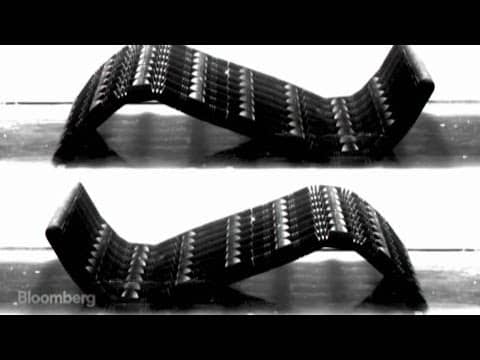When we take a look at any physical and tangible product, we think of the materials used to make that product. In our minds, the material is a raw product that has been shaped and treated to meet the specific need of the product. All that will change in the future as MIT introduces programmable materials that can change their shape depending on different stimuli.
The aim of the lab is to focus on “how to bring computer science to our physical world, how to program our physical world to assemble itself and transform on its own,” says Skylar Tibbits, Self-Assembly Lab head and research scientist in the MIT Department of Architecture.
“Every material responds to some sort of energy source, and every material has properties of stiffness or flexibility or expansion or contraction,” he explains. “We can have customizable smart materials that change shape, change properties, or have decision-making flexibility. We can combine them in unique ways so that they can act as sensors, actuators, or logic.”
This has already been implemented in a number of projects. Tibbits explains a project with Airbus involving a jet engine air inlet that traditionally causes drag during flight. The original inlet required a mechanical flap to open and close, adding weight, components, and complex controls. He simplified the complex processes by simply programming the material to close and open depending on external conditions eliminating the need for a separate control panel “We developed a piece of carbon fiber that’s completely programmable and can automatically open and close to control the airflow based on temperature, altitude, or pressure as the plane leaves the ground and flies,”
You can see some of these materials in action in the video below:
Another project with Briggs Automotive to adjust a rear spoiler is underway. The spoiler is used to enhance aerodynamics when required and increase traction in tires when the need arises by changing the rotation of the wing. “Let’s say that if it rains, you want to increase traction on the tires,” Tibbits postulates, “You can actually transform the wing panels on the car so that when they meet moisture they change and put more traction on the car. When they dry out, they become more aerodynamic and you can go faster.”
These revolutionary programmable materials will change the robotics industry comprising of huge production lines, where a single line is devoted to a single product. The breakthrough to actually program matter will result in the same material being used for different purposes, not only simplifying production but making it more efficient as well. While talking about the programmable materials, Tibbits said, “They go from flat sheets into 3-D objects, or they go from strands or fibers into 2-D sheets or 3-D objects. They really showed that we could customize our smart materials to respond to different energy sources and become different objects in the end.”
They literally have applications in every field known to man. They can make construction in space so much simpler. They can be used in panels in our houses to change based on the weather outside. They can act as sound enhancers or dampers. The possibilities are endless. We might see these programmable materials taking over the robotics industry within the next decade. You can look at the interview with Skylar Tibbits in the video below:

